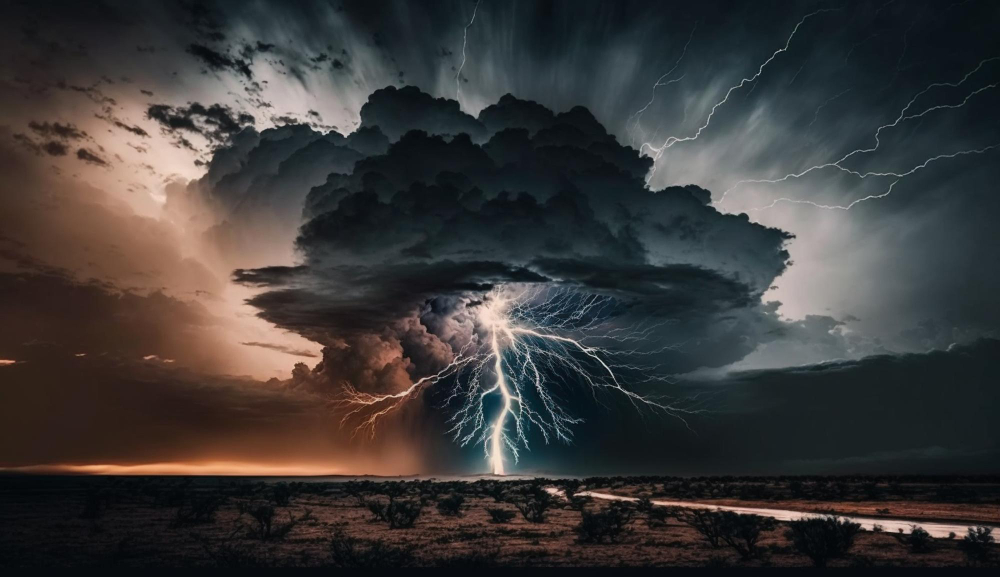When a storm hits, it often leaves destruction in its path. For homeowners, that means assessing the damage to their homes and property and determining what steps to take next. It can be an overwhelming experience, but with a plan of action, you can get your home back on track.

We’ve created a checklist of items for homeowners to consider when dealing with the aftermath of a storm – from evaluating damages and filing insurance claims to mitigation strategies to prevent future events from occurring. Ensure you have all the necessary information to get your life back on track as quickly as possible!
Contents
- An After-Storm Cheatsheet
- Inspecting Your Home Post-Storm: A Guide
- FAQ
- Can I start cleaning up before contacting my insurance company?
- How long does it take for an insurance company to process a claim?
- Are there any specific mitigation measures I should consider after a storm?
- Is it necessary to get my home inspected by a professional?
- What should I do if I can’t afford repairs or clean-up?
- Final Thoughts
An After-Storm Cheatsheet
Knowing what to do next in the aftermath of a storm can help alleviate your stress and hasten the restoration process. The steps outlined below will guide you through the process, ensuring you can start the recovery process as swiftly and efficiently as possible. Follow these steps to secure your property and protect your interests.
Step 1: Ensure Safety
Before you begin assessing damage, safety should be your top priority. Avoid entering your home if it appears unstable. Look for potential hazards such as broken glass, downed power lines, or gas leaks. Turn off the main electricity switch if you suspect any damage to your home’s electrical system.
Step 2: Document Damage
Start documenting the damage as soon as it is safe to do so. Take photos and videos of all affected areas inside and outside your home. This will be helpful when you’re filing an insurance claim. Remember to include damaged personal belongings in your documentation.
Step 3: Contact Your Insurance Company
Once you’ve documented the damage, contact your insurance company to report the incident. They will guide you through the claims process, providing information on what to expect and how to proceed. The sooner you begin this process, the quicker you can receive assistance.
Step 4: Start the Clean-Up Process
After reporting the damage to your insurance company, begin the clean-up process. Depending on the extent of the damage, you may need to hire professional services. Remove any water-logged items and start drying out affected areas to prevent mold growth.
Step 5: Implement Mitigation Measures
To prevent future damage, consider implementing mitigation measures. This could include reinforcing your roofing, installing storm shutters, or upgrading your drainage system. Consult with a professional to determine the best options for your home.
Step 6: Keep Track of Expenses
Keep track of all expenses related to the storm damage and clean-up process. This will be useful when filing your insurance claim and for tax purposes.
Step 7: Reach Out for Help
Dealing with a storm’s aftermath can be emotionally and financially overwhelming. Don’t hesitate to contact family, friends, and community organizations for support and assistance. Remember, you don’t have to go through this alone.
Inspecting Your Home Post-Storm: A Guide
Once you’ve taken the preliminary steps to manage the aftermath of a storm, the next crucial part is inspecting your home. A thorough inspection will ensure you know all the storm-related damages that may not be visible at first glance. This step-by-step guide will walk you through this important process.
Step 1: Conduct a Preliminary Inspection
Begin with a general overview of your property, looking for obvious signs of damage. This can include broken windows, damaged roofing, or fallen trees. Be sure to check for water intrusion or structural damage that may pose immediate hazards.
Step 2: Inspect the Roof
The roof is often the most vulnerable to storm damage. Check for missing or loose shingles, damaged flashing, or any signs of water leakage. It’s also essential to look for debris that could block your gutters or downspouts. Contact a roofing expert here to assess any potential damage.
Step 3: Check External Structures
For any damage, examine external structures such as sheds, garages, and fences. Also, assess your landscaping for fallen trees or branches that might have damaged underground pipes or power lines.
Step 4: Look for Water Damage Indoors
Inside your home, look for signs of water damage, such as discoloration on the walls or ceilings, a musty smell, or dampness. Be sure to check all rooms, including your basement and attic.
Step 5: Check Utilities
Ensure that all your utilities are functioning correctly. This includes your electricity, gas, water, and sewage systems. Any issues could pose health and safety risks and should be addressed immediately.
Step 6: Consult a Professional
If you suspect any serious damage, it’s best to consult a professional. An experienced home inspector can provide a more thorough evaluation and identify hidden issues, ensuring all damages are addressed.
FAQ
Can I start cleaning up before contacting my insurance company?
Yes, starting the clean-up process as soon as possible is essential to prevent further damage. Just be sure to document everything and track expenses for insurance purposes.
How long does it take for an insurance company to process a claim?
The time frame can vary depending on the extent of the damage and other factors. It’s best to contact your insurance company for an estimated timeline.
Are there any specific mitigation measures I should consider after a storm?
The best mitigation measures will depend on the type of storm and your home’s location. Consult with a professional to determine the most effective options for your property.
Is it necessary to get my home inspected by a professional?
While you can conduct a preliminary inspection yourself, having a professional assess your home for any hidden damages is always best. This will ensure that all issues are addressed and properly fixed.
What should I do if I can’t afford repairs or clean-up?
Don’t hesitate to ask for help from family, friends, and community organizations. Government assistance programs may also be available for those affected by natural disasters. Don’t try to handle everything on your own – it’s important to prioritize your safety and well-being. Overall, the most crucial steps after a storm are ensuring your safety and contacting your insurance company as soon as possible. Remember to document all damage and expenses and reach out for help if needed.
Final Thoughts
Dealing with the aftermath of a storm can be overwhelming, but following these steps will help you navigate through the process. Remember to prioritize your safety and well-being, document everything, and seek support when needed.
You can get your home back in order after a storm with proper preparation and action. Also, don’t hesitate to contact a professional for assistance and guidance. They have the knowledge and experience to help you through this challenging time.
